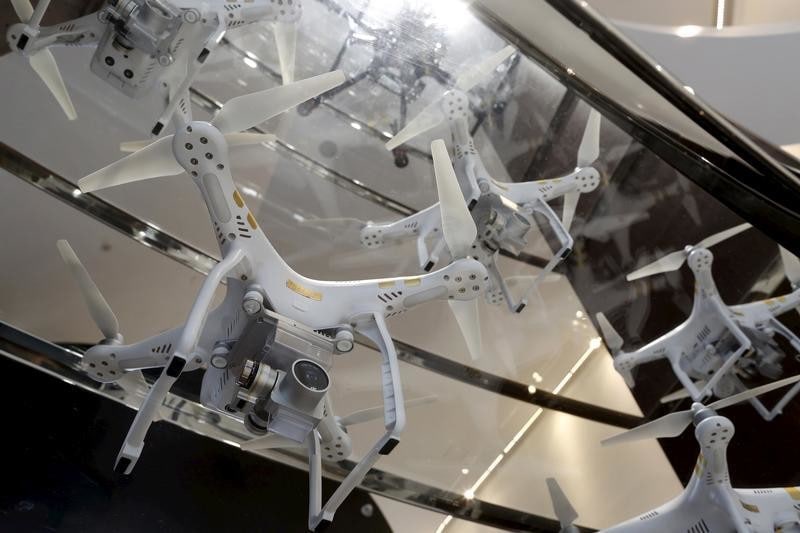How can we regulate the digital revolution?

Image: REUTERS/Eric Vidal
Stay up to date:
The Digital Economy
Driverless cars. 3D printed organs. Self-learning computers. Sounds like a science fiction novel—but that’s the reality and thrill of the Fourth Industrial Revolution. But as this revolution marches forward, there is one dimension that needs to be addressed and it is considerably less sexy: regulation.
The tension between the use of innovative technology and regulation is nothing new. In years’ past, there are textbook examples of how new technologies combined with innovative business models and ended up ahead of regulation. Take music-sharing company Napster. When the downloading of music became possible due to digital technology, Napster’s unique sharing capability came under fire from the music industry. While Napster itself wasn’t violating any copyright laws, the way its digital platform functioned was seen by the courts as having the sole purpose of facilitating copyright infringement. Napster lost to the music industry (and we all know what happened to Napster).
This case in particular points to a core conundrum on the timing of regulation and the launch of new business models. Today, like with Napster, digital technologies are enabling new platforms and business models that may be beyond what regulators have yet encountered. And with these platforms taking advantage of the fast-moving exponential technologies of the digital revolution, the potential for regulatory disconnect increases.
Drones may be a case in point. Advanced digital and mobile technology has provided the platform for drones to potentially become one of the next great delivery models. In places where roads and other transportation infrastructure are practically nonexistent or impassible – as in certain parts of Africa – drones can bring in medical supplies and other necessities. When ground transport is proving prohibitive in terms of costs, timing and logistics, drones are being proposed as a new alternative in package delivery.
It’s clear that airspace cluttered with drones can pose some real dangers and requires some sort of oversight. Yet regulation of drones may not be keeping pace with the innovative business models the industry wants to explore. In the United States, when drone regulations were approved last year, the industry actually saw dramatic growth because the rules were designed specifically for drones, and not just an extension of aircraft regulations as they had been. With regulatory parameters clarified, drone operators found they could move forward with more certainty. But the regulations are still not all that flexible – for instance, drones must stay in sight of the operator – which prevents new business models for package delivery that might be better, faster and cheaper than traditional forms of transport.

Another potential grey area is determining who is liable for harm caused by the digital platforms that enable the use of these new technologies, such as artificial intelligence and 3D printing. With the advent of “machine learning” (the ability for computers to learn and adapt according to past interactions), one can see how the issue of liability can be problematic. If a computer is learning from its interactions, how can the manufacturer know what the computer will do down the road? And is a company liable if a computer it manufactured “learns” an action that causes harm? Similarly, with 3D printing, how are product liability laws applied? Who does a consumer recover damages from if a 3D-printed plumbing part malfunctions? Is it the store that printed the part? Is it the company that supplied the design? Or is it the manufacturer of the 3D printer?
With so many regulatory questions surfacing as new business models are launched using exponential technologies, some business owners are taking a proactive role. For instance, technology companies are working with the EU to reshape privacy rules that impact their data mining business models. The drone industry has been successful in moving EU rules to a risk-based system – that is, allowing for waivers on a case-by-case basis versus waiting for a new set of regulations to be written for each scenario.
Companies that are looking to use exponential technologies to create innovative business models should consider following this lead. They need to work with governments and stakeholders to develop regulations that are flexible, transparent, and participatory, drawing on new models of collaboration between the public and private sectors. As the World Economic Forum puts it, innovative public-private partnerships are those where the state works jointly with the private sector “with a view to optimizing outcomes, impact, and sustainability.” If this can apply in the regulatory sphere as well, then innovators will have the freedom to apply tomorrow’s technologies without yesterday’s regulations slowing them down.
Don't miss any update on this topic
Create a free account and access your personalized content collection with our latest publications and analyses.
License and Republishing
World Economic Forum articles may be republished in accordance with the Creative Commons Attribution-NonCommercial-NoDerivatives 4.0 International Public License, and in accordance with our Terms of Use.
The views expressed in this article are those of the author alone and not the World Economic Forum.
Forum Stories newsletter
Bringing you weekly curated insights and analysis on the global issues that matter.
More on Fourth Industrial RevolutionSee all
Katia Moskvitch
April 9, 2025
Ibrahim Abdullah Alshunaifi and Caroline Tasse
April 3, 2025
Maria Alonso, Alex Koster and Paul Jordan
April 3, 2025
David Alexandru Timis
March 31, 2025
Utkarsh Amitabh and Ali Ansari
March 28, 2025




